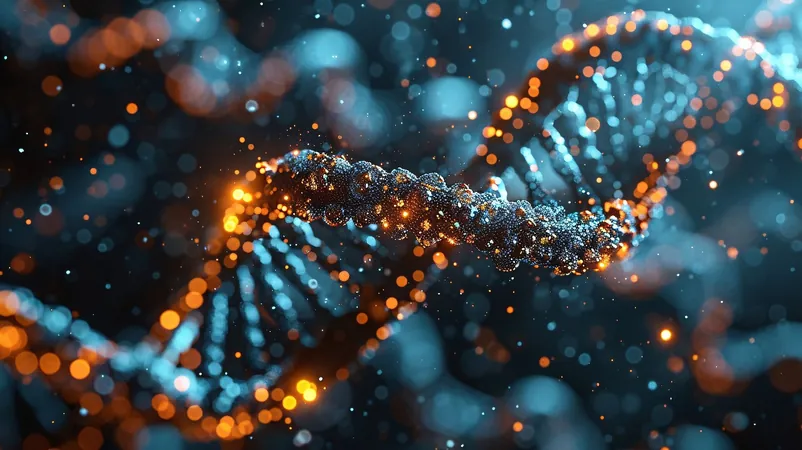
Breakthrough Discovery: New '3D Genome Organizer' Could Revolutionize Fertility and Cancer Treatments
2025-08-25
Author: John Tan
The Game-Changer: STAG3-Cohesin Unveiled
In an exciting breakthrough, researchers at Kyoto University have identified a revolutionary mitotic cohesin complex named STAG3-cohesin, essential for the unique DNA architecture in spermatogonial stem cells (SSCs) – the very foundation of sperm production. Without STAG3, mice experience significant fertility issues, as their SSCs fail to differentiate properly.
A Double-Edged Sword: Fertility and Cancer Connections
Interestingly, the implications of this discovery stretch beyond fertility. The team found that human immune B cells and B-cell lymphomas (a form of blood cancer) exhibit high levels of STAG3. Blocking this protein dramatically slowed the growth of these cancer cells, unveiling a potential new strategy to combat certain types of cancer.
The Secrets of DNA Packaging—Unraveled!
Every cell in our body contains identical DNA, but the magic lies in how this DNA is organized. Picture our genetic material as an intricate, two-meter-long string expertly folded into a space narrower than a human hair. This organization is meticulously maintained by protein complexes like cohesins.
Mapping the Mystery: Cohesins and Cell Development
In their quest for knowledge, the researchers scrutinized the landscape of cohesin proteins in SSCs. They made a groundbreaking discovery: RAD21, typically seen partnered with STAG1 or STAG2, was instead found alongside STAG3 in dividing cells. Through advanced techniques, they confirmed the formation of the new STAG3-cohesin complex.
Revealing the Impact: STAG3-Cohesin's Role in Cell Development
Further experiments revealed that this novel cohesin complex is responsible for the unusual properties of DNA boundaries in SSCs. Mice lacking STAG3 faced dire consequences—showing that this complex is pivotal not only for DNA organization but also for proper sperm cell development.
Expanding Horizons: Potential in Cancer Research
The team didn’t stop at germ cells. By pouring over extensive datasets of various human cell types, they confirmed that STAG3 is abundantly present in immune B cells and B-cell cancers. This revelation invites exploration into STAG3 as a potential target for innovative cancer therapies.
A Bright Future for Research and Treatments
This pioneering work, driven by Prof. Mitinori Saitou and his talented team, has illuminated STAG3-cohesin as a unique player in DNA architecture. As research unfolds, it could reshape our understanding of gene regulation, with implications far and wide—spanning stem cell biology, reproductive health, and the battle against cancer.
Stay tuned as this captivating science story continues to evolve, holding the promise of groundbreaking advancements in medicine!


 Brasil (PT)
Brasil (PT)
 Canada (EN)
Canada (EN)
 Chile (ES)
Chile (ES)
 Česko (CS)
Česko (CS)
 대한민국 (KO)
대한민국 (KO)
 España (ES)
España (ES)
 France (FR)
France (FR)
 Hong Kong (EN)
Hong Kong (EN)
 Italia (IT)
Italia (IT)
 日本 (JA)
日本 (JA)
 Magyarország (HU)
Magyarország (HU)
 Norge (NO)
Norge (NO)
 Polska (PL)
Polska (PL)
 Schweiz (DE)
Schweiz (DE)
 Singapore (EN)
Singapore (EN)
 Sverige (SV)
Sverige (SV)
 Suomi (FI)
Suomi (FI)
 Türkiye (TR)
Türkiye (TR)
 الإمارات العربية المتحدة (AR)
الإمارات العربية المتحدة (AR)